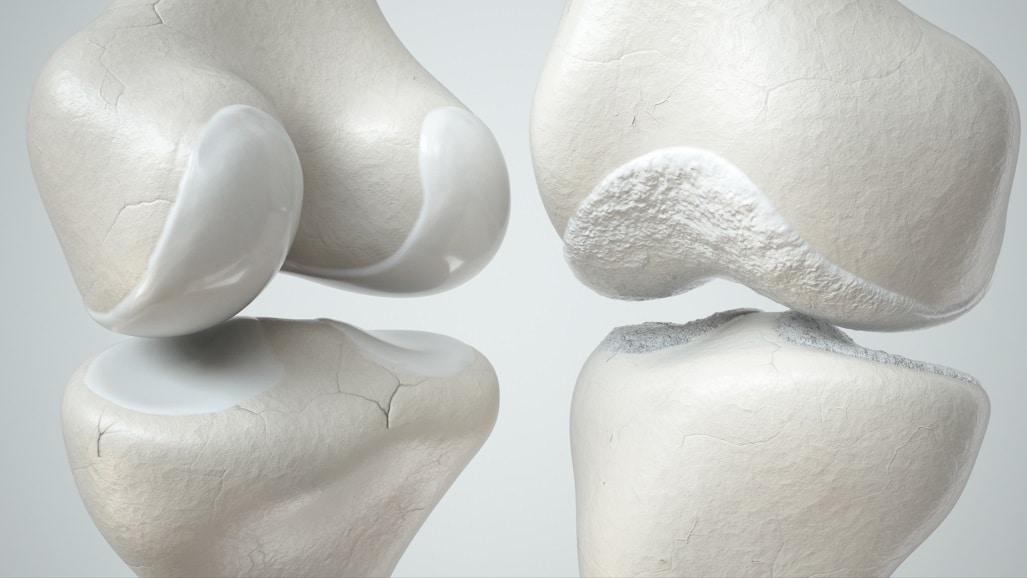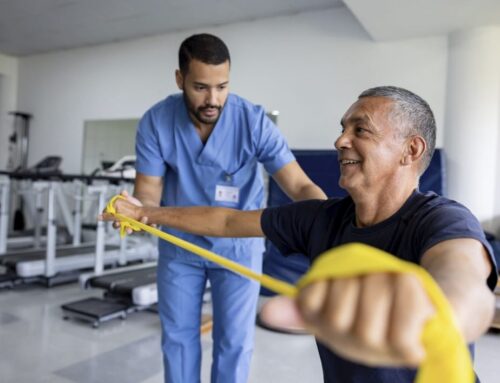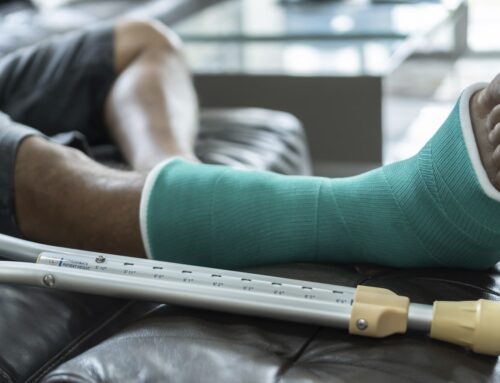May is National Arthritis Awareness Month, a time to raise awareness about the prevalence and impact of arthritis. This disease is the number one cause of disability in the U.S., affecting more than 50 million people. In this blog, we share arthritis facts and arthritis myths to raise awareness.
What is arthritis?
Arthritis is a condition characterized by inflammation of the joints. Arthritis can cause joint pain, stiffness, swelling and a decreased range of motion. Its symptoms depend on the type of arthritis and generally worsen with age.
The disorder can cause permanent changes to the joints. Damage can be visible, like in knobby finger joints, but some changes can only be seen with an X-ray.
There are over 100 types of conditions related to arthritis, but osteoarthritis and rheumatoid arthritis are two of the most common. These types of arthritis damage the joints in different ways.

Osteoarthritis
Osteoarthritis is the most common type of arthritis and involves damage to your joint’s cartilage. Cartilage is the hard, slippery tissue that coats the ends of bones where they join to form a joint. The condition causes cartilage to break down and leave the bones unprotected. The bones may grind against each other, causing pain and restricted movement.
Osteoarthritis is a degenerative joint disease usually caused by gradual damage to joint cartilage that worsens over time. Other issues that could surface due to this disease include fluid building up within the joints or an overgrowth of bone.
Rheumatoid arthritis
The second most common type of arthritis is rheumatoid arthritis, a chronic inflammatory disorder that affects the lining of the joints. The body’s immune system attacks the synovium, a tough membrane that lines the joint. The synovium becomes inflamed and swollen, eventually destroying cartilage and bone within the joint.
Rheumatoid arthritis can affect nearly any joint but often affects the joints in the hands, wrists, ankles, knees or shoulders. The cause is unclear, but researchers believe genetics, hormones and lifestyle choices may increase a person’s risk of developing it. This type of arthritis is chronic and does not have a cure, but symptoms can be managed with medication.
Debunking arthritis myths
Despite its prevalence, misconceptions about arthritis can prevent patients from seeking proper treatment and pain management. Let’s dispel four myths surrounding this disease.
Myth 1: Arthritis only affects older people
Arthritis is not exclusive to older individuals. While the risk for arthritis increases with age, it can affect people of any age, including children. Juvenile arthritis is an autoimmune disease affecting children aged 16 or younger. Rheumatoid arthritis can occur at any age.
Myth 2: People with arthritis should not exercise
Exercise is beneficial for those with arthritis. Physical activity can improve muscle strength, reduce joint pain and fight fatigue. Exercise can also increase flexibility and range of motion.
Myth 3: All joint pain is arthritis
While arthritis is a common cause of joint pain, other conditions can cause pain, such as lupus, bursitis and tendonitis. Injuries or illnesses can also cause joint pain. A proper diagnosis is essential to determine the appropriate course of treatment.
Myth 4: There is no treatment for arthritis
There are many treatment options for arthritis, including medication, physical therapy and weight management. Treatment options depend on the type of arthritis and aim to alleviate symptoms and improve joint function.
Rheumatoid arthritis is often treated with medication to slow the progression of the disease. Pain relievers like non-prescription NSAIDs and physical therapy are usually recommended for osteoarthritis.
How to manage arthritis symptoms
There are many treatment options available to alleviate symptoms, reduce pain and improve joint function. Your orthopaedic doctor will create a treatment plan based on the progression of the condition and your symptoms.
Exercise
Keeping physically active is important for everyone, but it is crucial for those with osteoarthritis. Regular exercise may help you lose weight and reduce the pressure on weight-bearing joints.
Exercise may be difficult when your joints ache, but movement can ease tight muscles and ligaments. The exercise does not have to be too strenuous. Yoga and swimming are generally easy on the joints but also provide a good workout. Learn about at-home exercises for osteoarthritis.
Physical therapy

As mentioned above, exercise is beneficial in easing the symptoms of osteoarthritis. Physical therapy is another helpful solution. Not only does it promote stronger muscles and ligaments, but it also helps with body alignment and balance.
A physical therapist will work with you to determine the best course of treatment to help improve your flexibility and mobility. You may also get recommendations for orthotics to reduce stress on the joints.
Nutritional supplements
Nutritional supplements like glucosamine and chondroitin claim to help treat or mitigate the effects of arthritis. However, no proven research demonstrates that either supplement will treat symptoms. Before taking any supplements, check with your doctor to ensure they are safe for you.
Joint replacement
In severe cases of osteoarthritis, joint replacement surgery is a possible solution. Typically, this is the most viable option for patients with chronic pain with little to no improvement for many years. Joint replacement is a safe procedure that allows patients to enjoy a more pain-free life. Speak with your doctor about possible treatments if less invasive options have not helped.
Orthopaedic specialists in Cary
Arthritis can affect every aspect of your life. If you have prolonged joint pain, make an appointment with a specialist at Cary Orthopaedics to learn more about your options.






